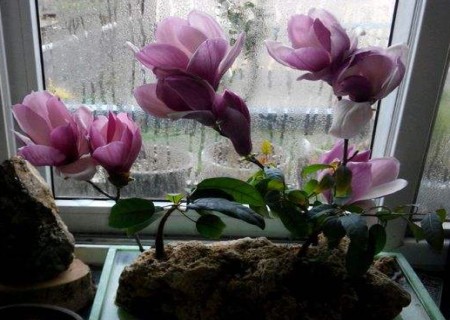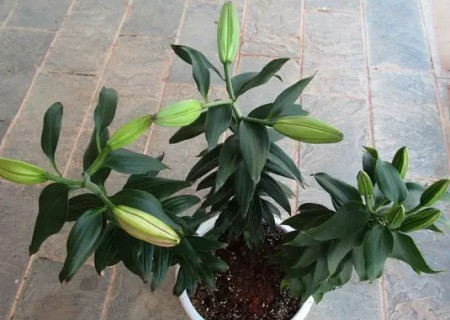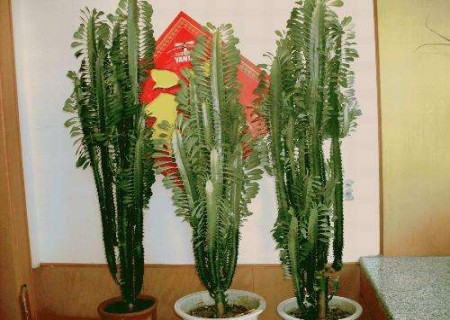How to plant a good potted magnolia flower
Magnolia looks very much like a lotus. When Magnolia is in full bloom, the petals stretch around, and the whole tree is full of leaves, green and white, which is of good ornamental value. Magnolia scattered fragrance, refreshing, but also can purify the courtyard air. Magnolia is beautiful, but the florescence is short, so it is especially gorgeous when it opens, facing the frost and cold without flinching.
Magnolia is a flowering tree species with early spring color and fragrance. When planting, it is necessary to grasp the right time, neither too early nor too late. It is most suitable to plant Magnolia 10 days before germination in early spring or before spreading leaves after flower fade. When transplanting, regardless of the size of the seedlings, the roots should carry mud clumps and be careful not to damage the roots as far as possible. To ensure survival. Before planting, fully mature organic fertilizer should be applied in the hole as base fertilizer. After planting, seal the soil and press it, and pour enough water in time. The specific technologies are as follows:

1. Raising seedlings
Choosing a pot when sowing is the same width and height, and at least twice the size of the magnolia tree's root system. Pottery pots are heavy, but provide stability in windy days if you plan to keep the container outdoors all or part of the year. Choose a container that has good drainage. After the sowing seedlings are unearthed, the sun should be shaded properly in the middle of summer for 2 years, and the cold should be protected in the north after entering winter.
2. Transplanting
It is better to transplant before sprouting, or before flowers are just shedding, or before spreading leaves. When the seedlings grow 2 to 3 true leaves after they are unearthed, the survival rate is higher, up to more than 95%. The transplant should be carried out in overcast and rainy days, watering once in the morning and evening every day, and shading appropriately when the sun is too strong. According to the climatic conditions of Jigongshan, the effect of transplantation is generally better in the first and middle of May. Transplanting does not hurt the root system, large seedlings should be planted with soil balls, dig large holes, deep fertilization, appropriate deep planting can inhibit tillering and be beneficial to growth.
3. Watering
The fleshy root of Magnolia is not resistant to stagnant water, so it is appropriate to keep the soil slightly moist during the flowering and growing period. Summer is the growing season of Magnolia. High temperature and drought not only affect vegetative growth, but also cause flower buds to shrink and fall off, affecting flowering in the coming year. Therefore, attention should be paid to irrigation and soil moisture conservation, especially in key scenic spots, and the soil should be kept moist frequently. After entering the autumn, we should reduce watering, delay the rooting of magnolia, and promote the branches to mature in order to survive the winter. It is generally not watered in winter, but only once when the soil is too dry.
4. Fertilization
In addition to paying attention to base fertilizer, acid soil should apply more phosphate fertilizer appropriately. Topdressing before and after flowering is particularly important, the former promotes flowers in full bloom, the latter is beneficial to pregnant buds, and the period of topdressing is in late February and May. Magnolia prefers fertilizer, but avoids big fertilizer; generally applying fertilizer twice during the growing period can be beneficial to flower bud differentiation and promote growth. Once in early spring, and again in May-June. Fertilizers are often made of fully mature organic manure. Newly planted seedlings do not need to be fertilized until after falling leaves or in the following spring.
5. Pruning
The pruning period should be after flowering and before sprouting. Diseased, over-dense, redundant, juxtaposed and futile branches should be cut off, and sprouting should be removed at any time at ordinary times. When pruning, the medium and short branches shorter than 15 cm are generally not cut, the long branches are cut to 12 cm ~ 15 cm, the cut mouth should be smooth and slightly inclined, and the distance from the bud should be less than 5 mm. Due to the poor healing ability of branches and stems of Magnolia, most of them are not pruned except those which are very necessary.
Magnolia branch wound healing ability is poor, so generally do not prune. However, for the sake of reasonable tree shape, the overgrown branches, withered branches, disease and insect branches and branches that hinder the beauty of the tree shape should still be cut off at the initial stage of leaf expansion. In addition, cut off the ear after the flower fade, so as not to consume nutrients and affect the flowering in the coming year.
In order to grow potted magnolia, you also need to master the following techniques in maintenance:
The main results are as follows: 1. The upper pot soil of potted magnolia generally chooses neutral sandy loam, and the pot is changed once every two years, and some mature organic fertilizer is added as the base fertilizer.
2. Topdressing was applied once a year in three weeks before flowering and at the end of autumn.
3. It is necessary to prune once a year after the flower fades and after seeing the bud, only the upper part of the flower branch is cut off, and the bud pruning is mainly used to cut off the long branches and excess buds. After pruning, the wound should be sealed with adhesive tape to facilitate wound healing and prevent disease infection.
4. When overwintering, bury the plant in the sunny place outside or in the sunny place indoors. If the room temperature is kept at about 10 ℃, it can blossom 3 weeks in advance.
Time: 2019-05-24 Click:
- Prev

How to plant lily bulbs-potted lily bulbs planting method illustration
Lily, perennial herb with ornamental flowers and underground bulbs for food, was discovered for food and medicinal use in the 4th century AD. Lily is named lily because of its scale overlap, lily also means good harmony for a hundred years, and lily color elegant, fragrance
- Next

Planting method of potted keel flower in family
Everyone who loves his family will more or less buy some flowers or green plants to decorate his home. In many families, keels are often used as potted plants, which can be used as rootstocks for grafting other cactus plants. The keel can also be used as a fence plant, the plant can often reach 8 meters or more, and the leaves on the stem degenerate into thorns.
Related
- Fuxing push coffee new agricultural production and marketing class: lack of small-scale processing plants
- Jujube rice field leisure farm deep ploughing Yilan for five years to create a space for organic food and play
- Nongyu Farm-A trial of organic papaya for brave women with advanced technology
- Four points for attention in the prevention and control of diseases and insect pests of edible fungi
- How to add nutrient solution to Edible Fungi
- Is there any good way to control edible fungus mites?
- Open Inoculation Technology of Edible Fungi
- Is there any clever way to use fertilizer for edible fungus in winter?
- What agents are used to kill the pathogens of edible fungi in the mushroom shed?
- Rapid drying of Edible Fungi

